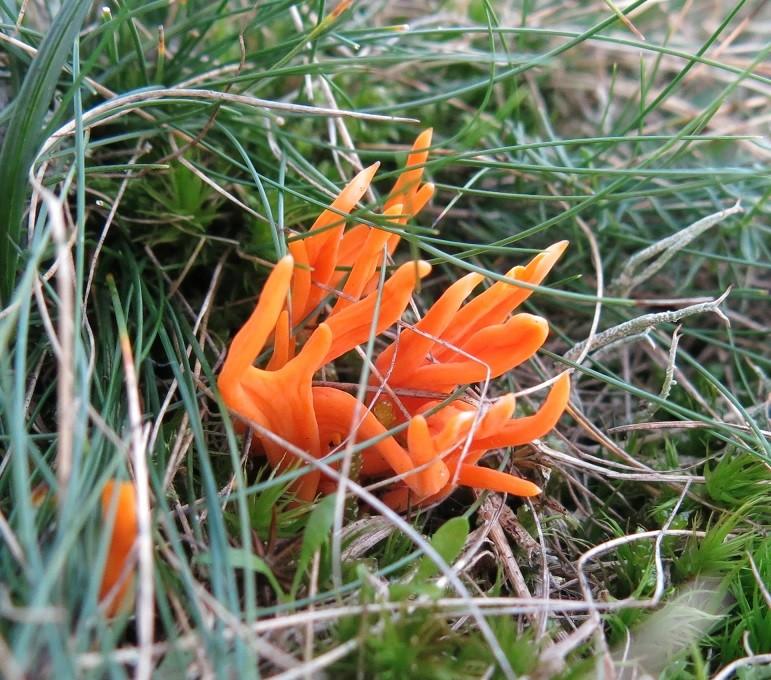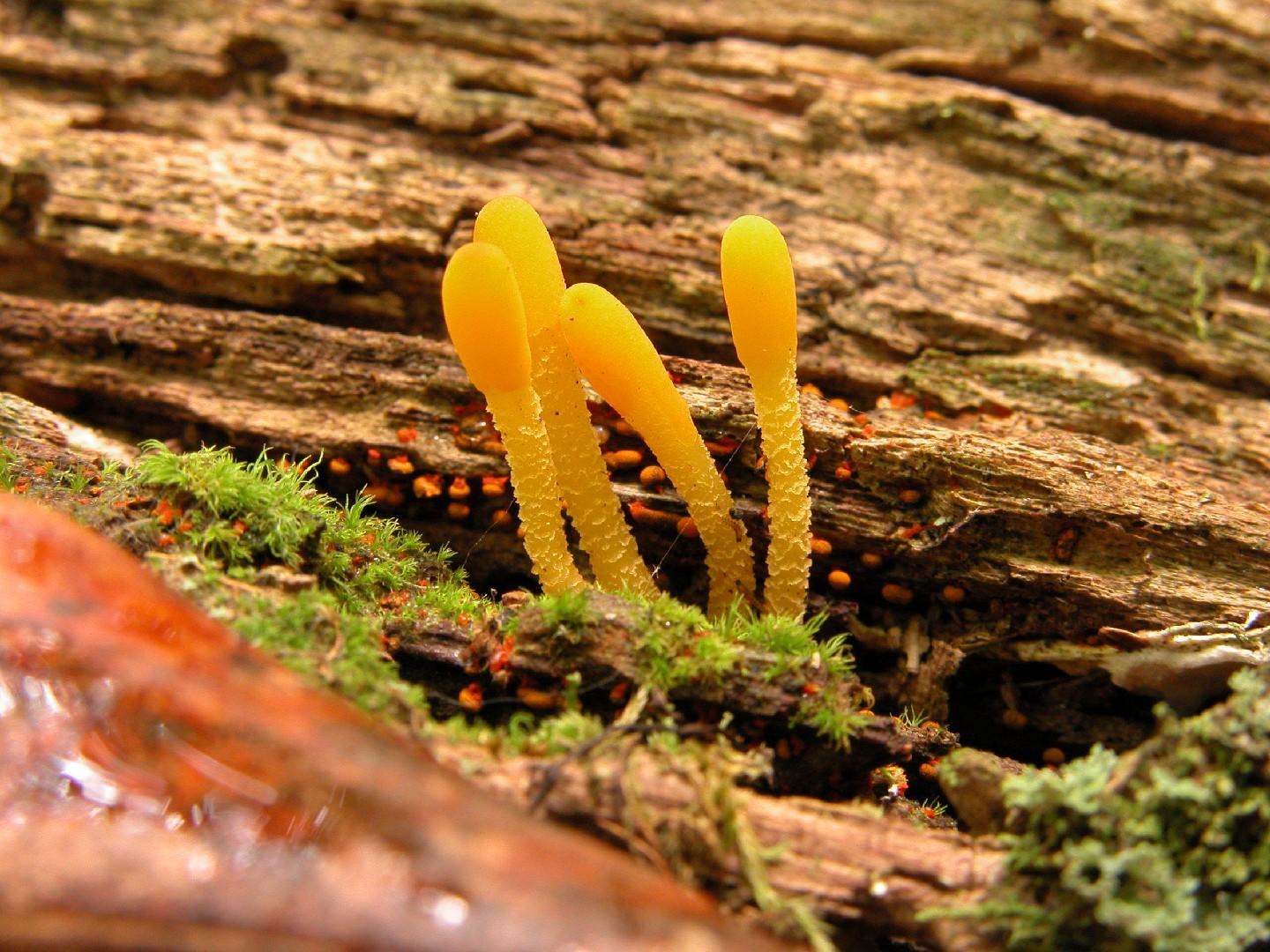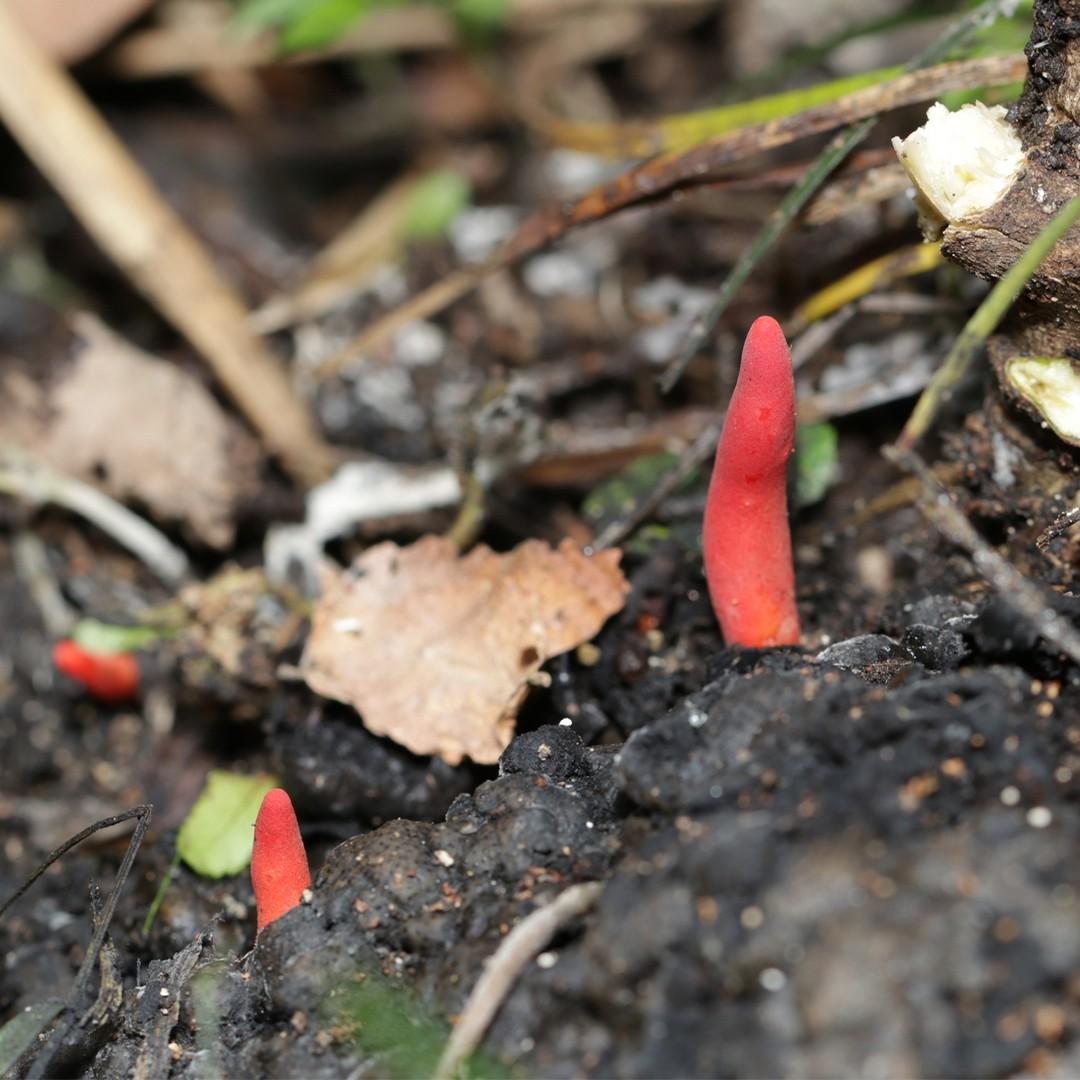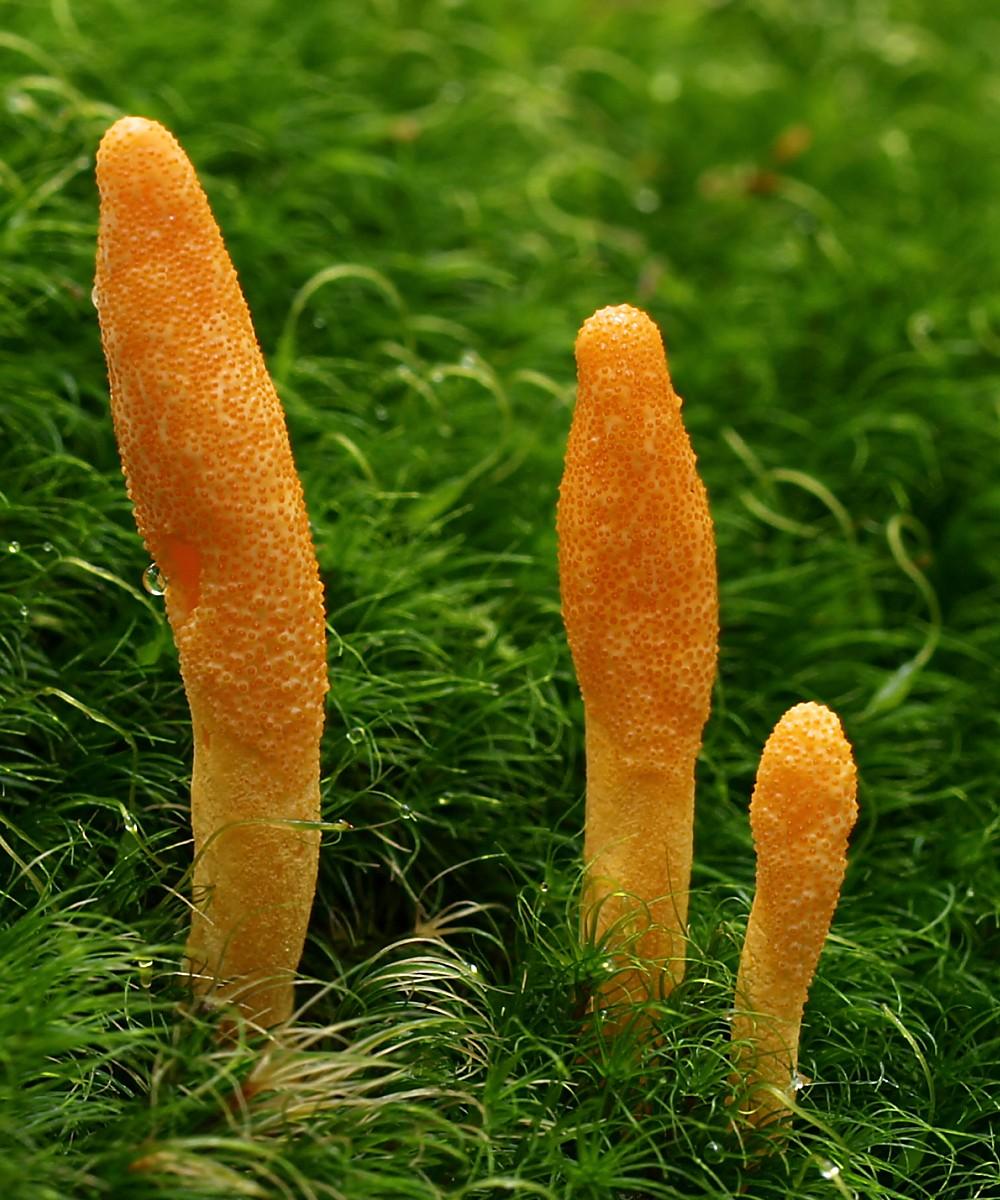

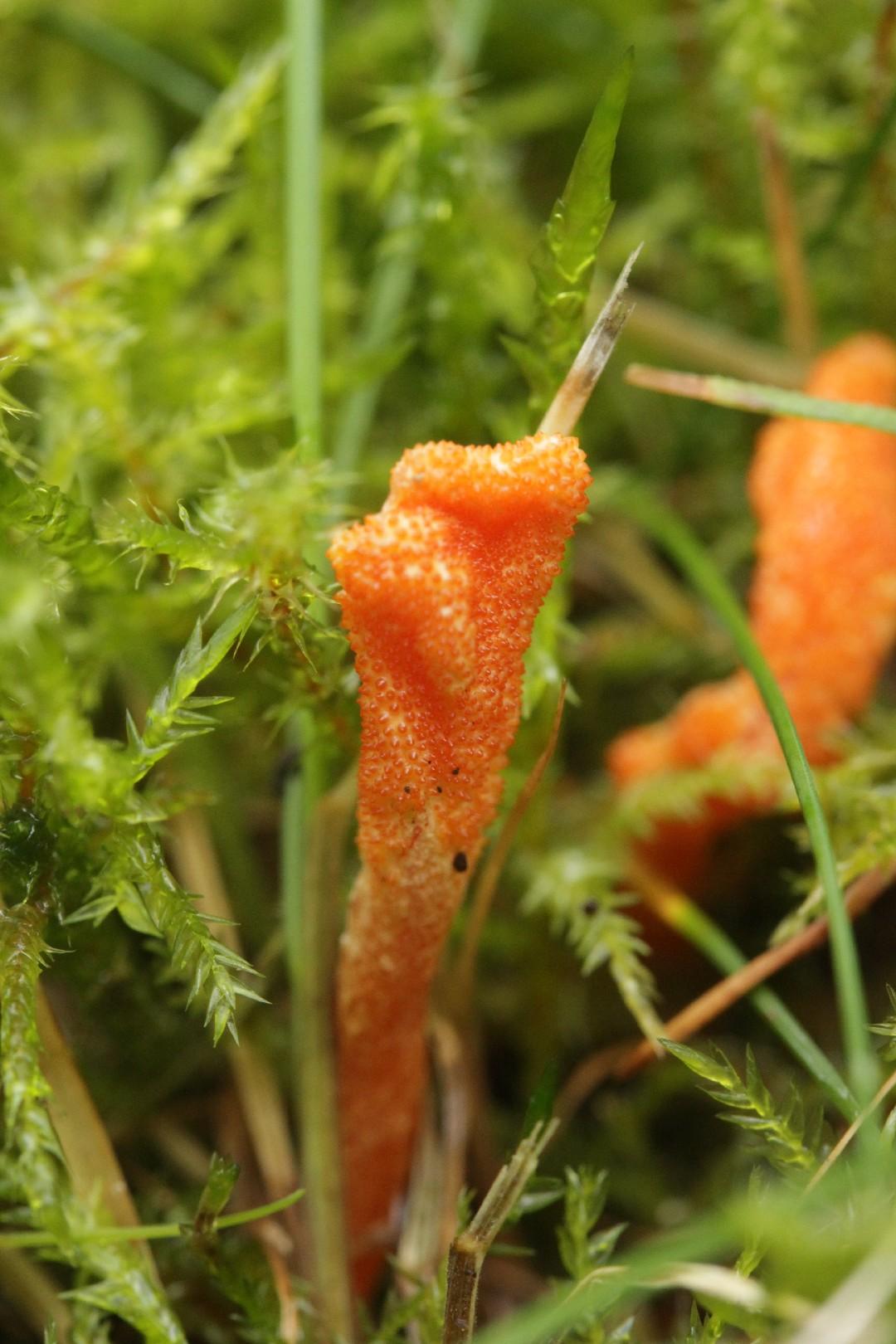
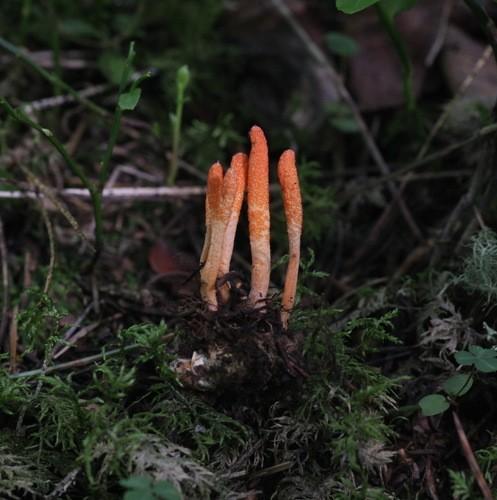
Scarlet caterpillar club
Cordyceps militaris
A species of Cordyceps.
The scarlet caterpillar club, often seen emerging from decaying wood and moss in forests, actually originates from the subterranean pupae of insects infected by its fungal spores. Its primary hosts are butterfly and hawk-wasp pupae. This fungus has been observed at altitudes reaching 2500 m.
Attributes of Scarlet caterpillar club
Height
4 - 10 cm
Cap
5 mm wide
Stem
2 - 8 cm long, 5 cm wide; club-shaped, with the top wider than the base; orange and pimply and orange; smooth
Stem Shapes
Tapering
Stem Surfaces
Smooth to slightly fibrous
Flesh
outer cortex; pale watery orange
Ring
Ringless
Spore Print Color
White
Odor
Mild, earth-like scent
Body Color
Orange
Flesh Bruises
The flesh or milk does not discolor when bruised or cut.
Growth Form
Gregarious
Nutrient Gathering
Parasitic
Substrate
On soil, On insects
You can find Scarlet caterpillar club by these plants
Spruces, Firs
Occurence Habitats
Meadows, Mixed Woodland
Species Status
Widely distributed in North America
Endangered Species
No
Scientific Classification of Scarlet caterpillar club
Phylum
Sac fungi
Class
Sordariomycetes
Order
Hypocreales
Family
Cordycipitaceae
Genus
Cordyceps
Toxicity and Edibility of Scarlet caterpillar club
Is Scarlet caterpillar club Toxic?
Toxicity information is not available for this mushroom. Always consult with an expert before consuming any wild mushrooms.
Is Scarlet caterpillar club Toxic to Dogs?
Scarlet caterpillar club can be dangerous to dogs. If your pet has consumed this mushroom, seek immediate veterinary attention. Symptoms may vary, but early intervention is crucial for the best outcome.
